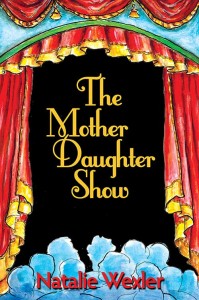I just returned from my local independent bookstore, and I’m pleased to report that the place resembled a supermarket hours before a major storm is predicted to hit. Aisles crowded with shoppers, a line fifteen deep at the register, store employees earnestly connecting customers to the books they’re desperately seeking. All in all, a sight for sore eyes.
Of course, there’s no hurricane or snowstorm on the horizon—just Christmas, beginning less than twelve hours from now. And the rush at Politics & Prose, located just ten blocks from my house, appears to be part of a nationwide trend (as described a couple of weeks ago in the New York Times) back to hard copies of books and brick-and-mortar bookstores. No one has apparently yet figured out how to enable shoppers to give e-books as presents (and it’s not clear people would find them to be appealing gift purchases anyway, virtual as they are). And even Amazon can’t make a book appear on your doorstep just hours after you’ve hit the one-click button.
I can only hope the trend, if such there is, lasts beyond the Christmas shopping season. I understand the lure of Amazon—the low prices, the convenience, the nearly unbelievable delivery time (what, do they bribe the Post Office or something?). But I don’t particularly want to live in a world without actual bookstores, and sometimes it seems as if that’s where we’re heading.
Not that I think Politics & Prose is in danger of going out of business anytime soon. I’ve never seen it as busy as it was today (and I confess I left empty-handed rather than brave the checkout line), but it has a loyal and devoted following in this part of the world. In fact, “loyal and devoted” is a significant understatement. A year or so ago, when its longtime owners (and founders) announced that they were planning to sell the store, the level of trepidation around here was commensurate with what a group of devout Catholics might experience at the announcement of an imminent change in the papacy. Actually it may have been more acute, since even devout Catholics aren’t about to start worrying that their Church is going to disappear.
Things are calmer now. Politics & Prose has not only survived a change in ownership, it appears to be thriving. The new owners are treading carefully, aware that their constituency is nervous about sudden changes. But they have introduced a few innovations, including a weird-looking machine installed in the fiction section, christened Opus, that can print books on demand. I have yet to see it in action, but who knows, it may well be the wave of the future. Imagine a bookstore that has only display copies of books, so that you can leaf through one if you desire. If you decide you want to buy a copy, it can be printed while you wait. No longer would stores have to try to calibrate the number of copies of a certain title they can sell, risking either overstocks—which they then have to return in possibly unmarketable condition or sell at a deep discount—or long waits for customers ordering books, which may drive them to Amazon. And no such thing as out-of-print titles, either.
If Opus is the ticket to getting Politics & Prose to flourish well into the 21st century, then I’m all for it. Like many in this part of D.C., I find it hard to imagine life without the place. I’ve spent many happy hours there combing through the shelves and display tables, bumping into friends and acquaintances, chatting over coffee or lunch in the café, and—last but not least—buying books. As I seem to keep saying, my novel The Mother Daughter Show isn’t autobiographical, but one of the lines I use about my main character, who’s under pressure to earn some money, could be applied to me: “No more dreaming about getting a job in her cozy local independent bookstore, where she spent so much time browsing some people probably thought she did work there.”
One of the things you often hear about Politics & Prose is that writers in the neighborhood (and there are many) have written entire books in the basement café. Honestly, I don’t know how they do it. I tried to just proofread the galleys of The Mother Daughter Show there and found it nearly impossible. There was just way too much going on. Among other things, I was being stalked by an irresistible, wide-eyed toddler who was practicing her newfound stagger by repeatedly advancing on my table. My galleys couldn’t compete with that.
But if I haven’t written a book there, I will soon be doing one thing quite a few other local authors have done: appearing at an in-store event (on January 15th, at 1 p.m.). Not that this is an honor limited to folks in the neighborhood. Bill Clinton recently appeared at Politics & Prose to tout his book, and shortly before that the store packed them in to hear Walter Isaacson discuss his new biography of Steve Jobs. I’m actually starry-eyed and somewhat disbelieving about standing at the very same lectern where I’ve seen many of my own favorite authors speak. The chance to hear in person someone whose writing you’ve admired, to ask that writer questions, to exchange a few words as he or she signs your book—say what you will about Amazon’s prices and convenience, but that’s something I doubt they’ll ever be able to offer to their customers.

